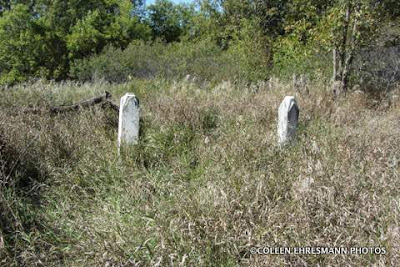
This is the south ridge line of the park, looking north. I think there was more color on the north ridge line looking south, but I did not have a camera on Day 1. That was a real bummer as I saw 'forest' things I did not see on Day 2.

It also had deer. I spooked one as I climbed up the hill to the trees at the top.



something yellow

lots of the light purple daisy-like flowers

red color of sumac

one red maple leaf dancing in the breeze

wild rhubarb

more of the light lavender flowers

one of several old bridges

another sign of fall
One of the things I noticed at Sica Hollow is the lack of birds. The forest is so quiet. We did not meet anyone else on the trails. There was evidence of horses on the trails recently, but very little wildlife. As we left the park on Day 2 we saw a hawk with a snake in its mouth, but once again, until I got the camera out and ready, the hawk and snake disappeared.

There were four headstones in this one.

Henry Roy, age 58
Died in 1898

this on the ground next to Henry's headstone
no name

Frank Roy, age 67
Died Oct. 18, 18--

Sarah
and a fourth marker carved SW

the corner post of this little cemetery

more sumac

along the trail of Sica Hollow
From Minnesota Valley History Learning Center: "Sica Hollow is steeped in Native American, specifically Dakotan, culture and beliefs. Sica(ßiça: pronounced she-cha) translates from the Dakota language to mean "bad, evil, or malicious".An example of the nature that inspires this title are the red bogs were seen as blood of the ancestors of the Dakota people. Interpretive guides along the National Recreation Trail, the Trail of Spirits,further give new meaning to the unique nature to be found there.
The park is also of geologic importance and interest. It sits atop the Coteau des Prairies, a plateau that rises from the South Dakotan flatlands left in the wake of two diverging glacial lobes. The park also features the Glacial River Warren, a prehistoric outlet that drained glacial Lake Aggazi. Both of these, the Coteau de Prairies and Glacial River Warren, are designated National Natural Landmarks."
Do you remember the native gentleman who played the flute at Canyon Vistas? Was he from the Dakota tribe?
ReplyDelete